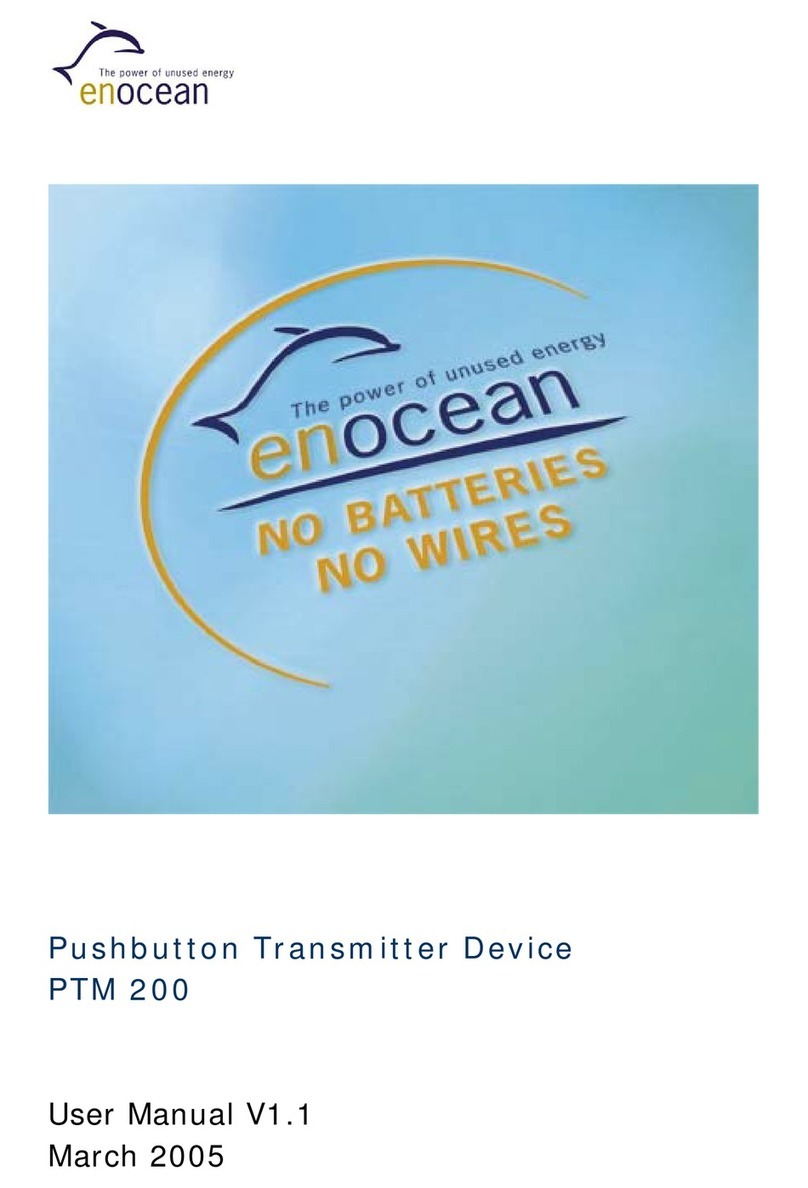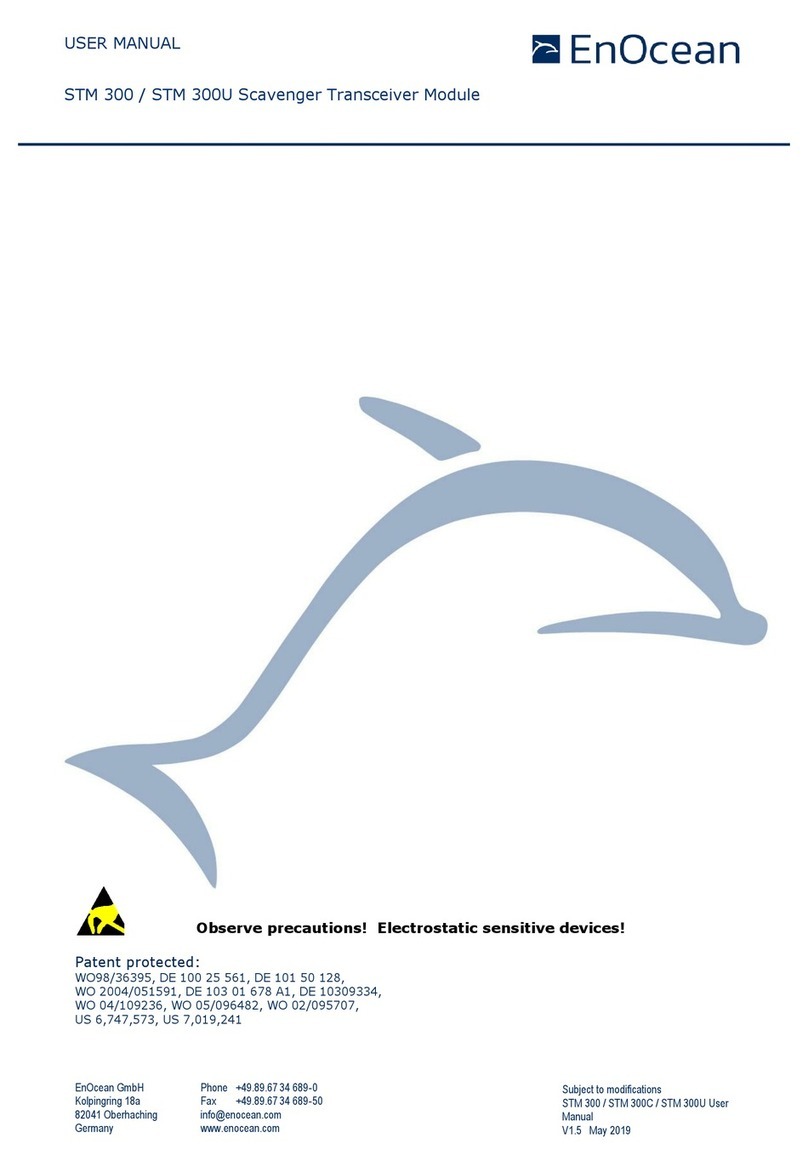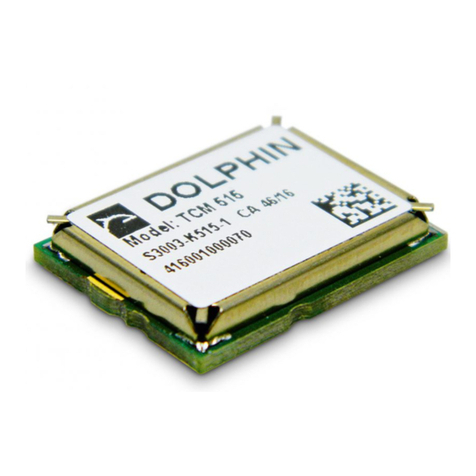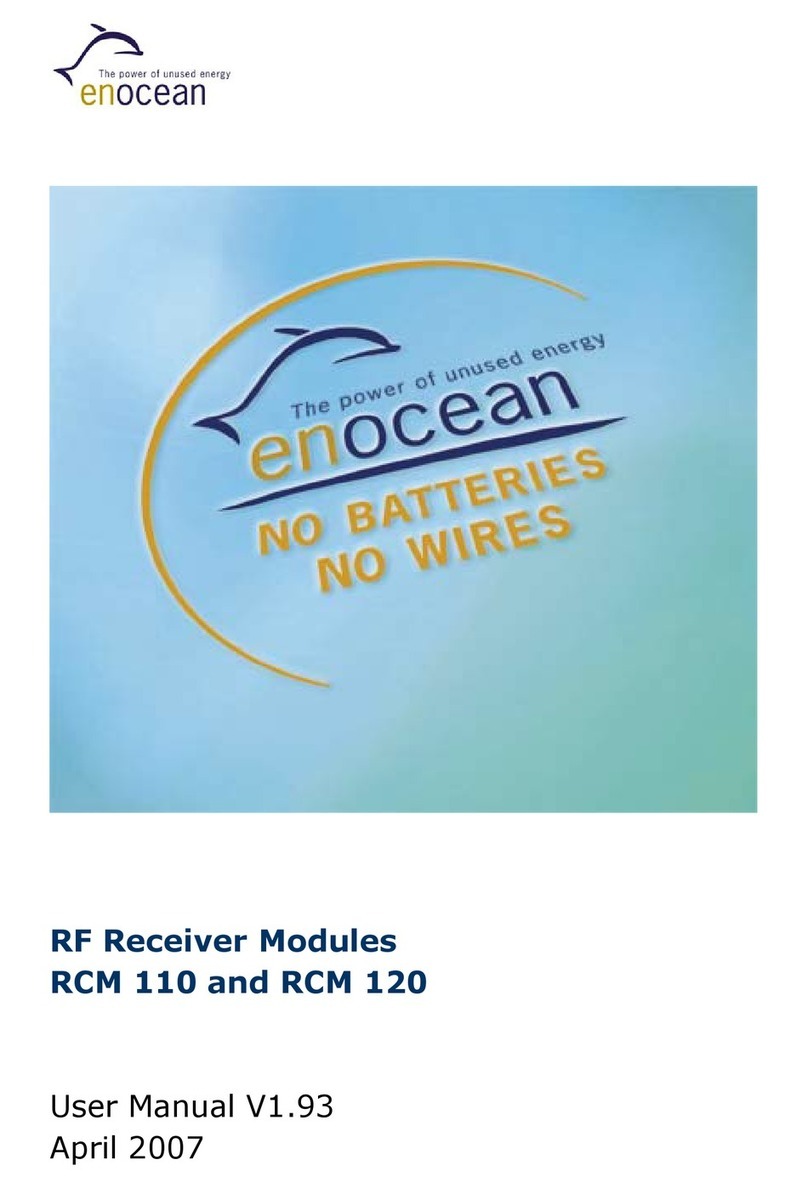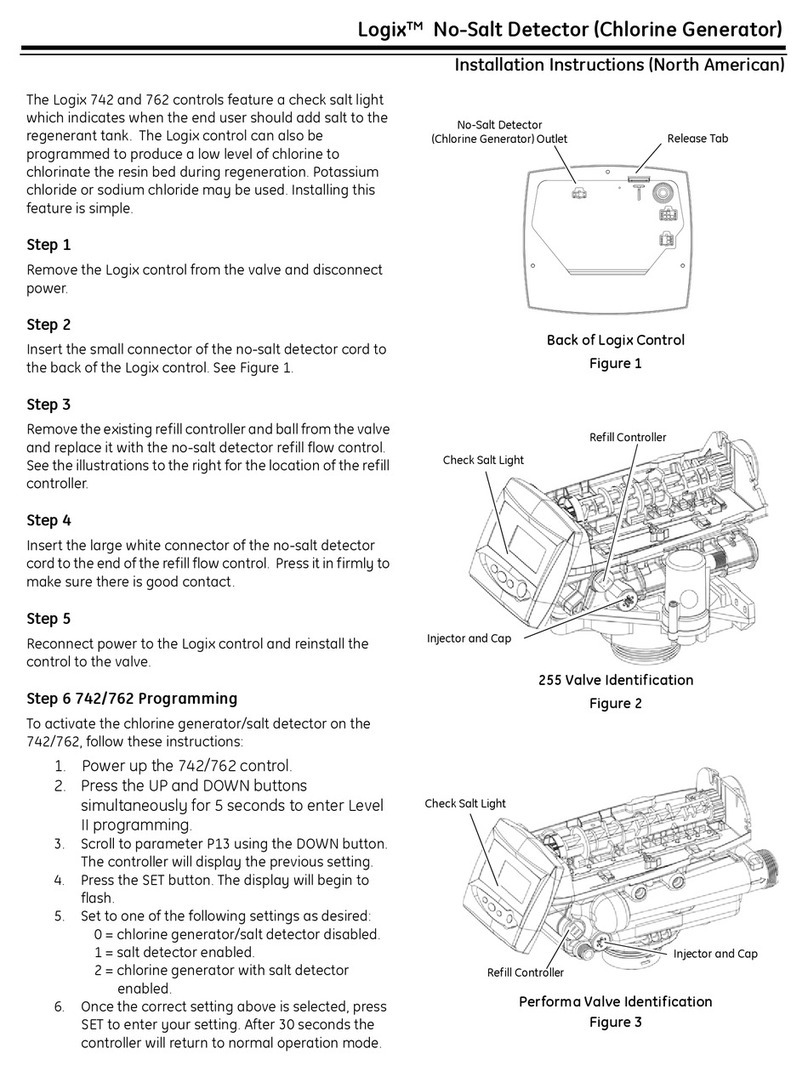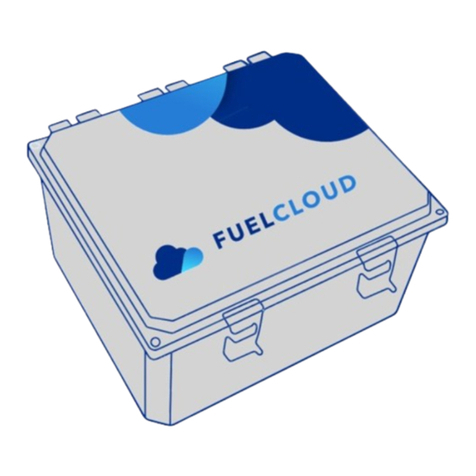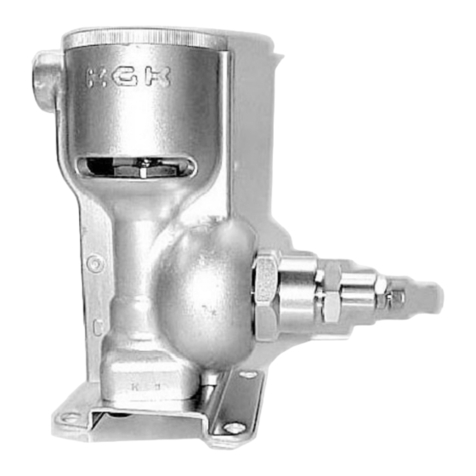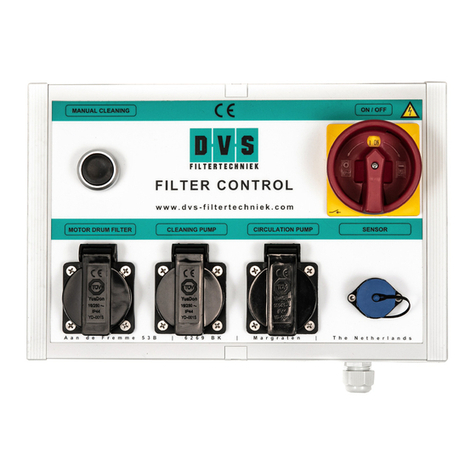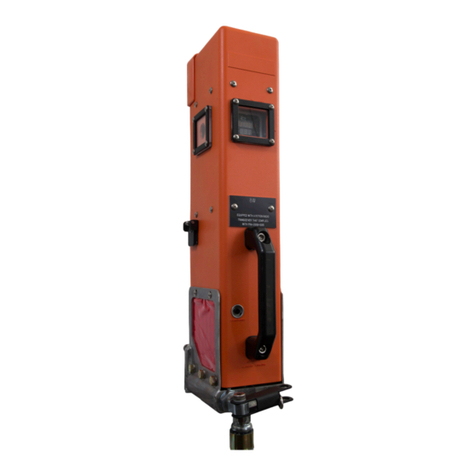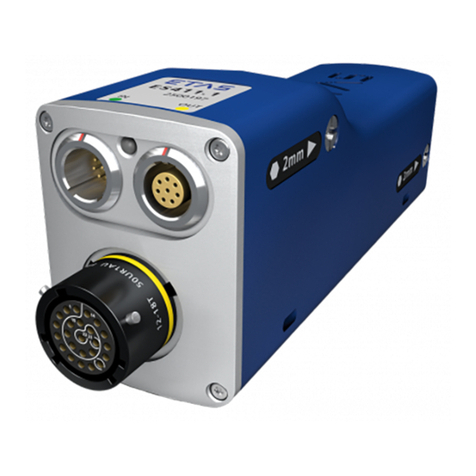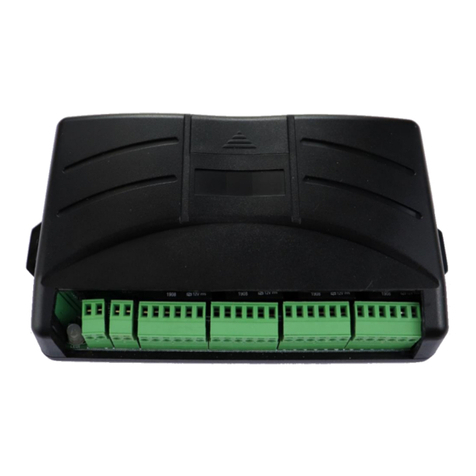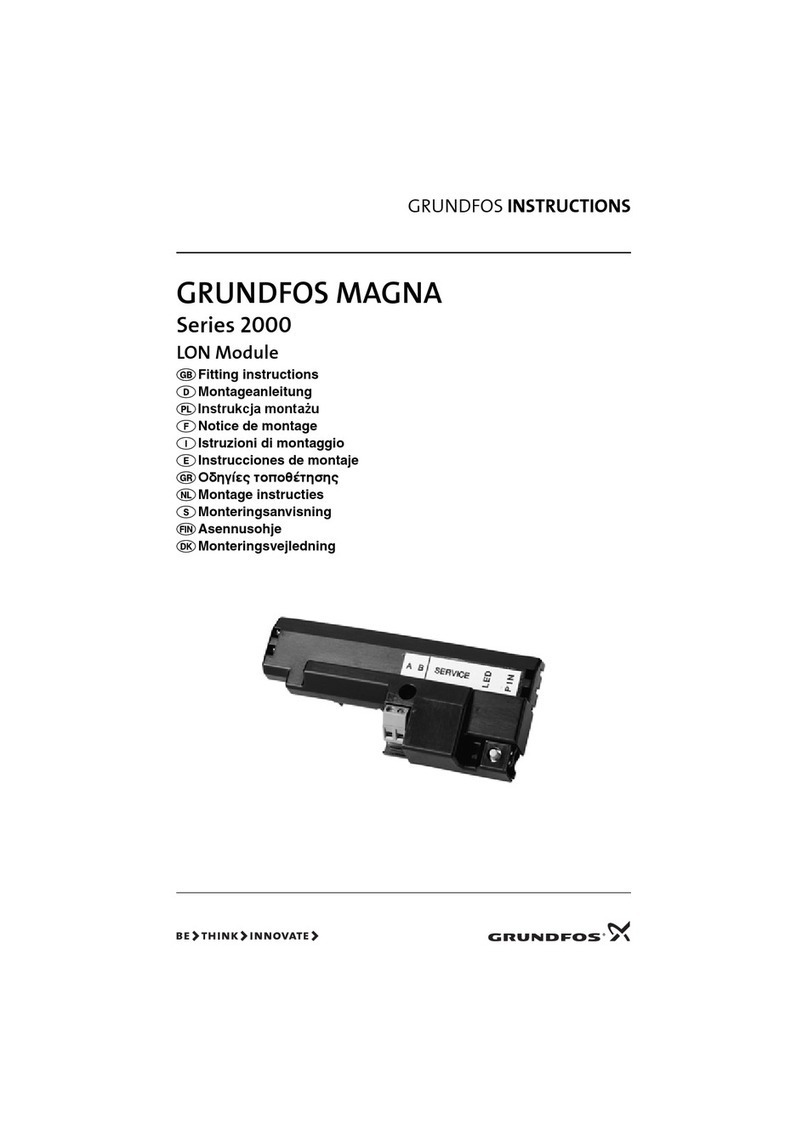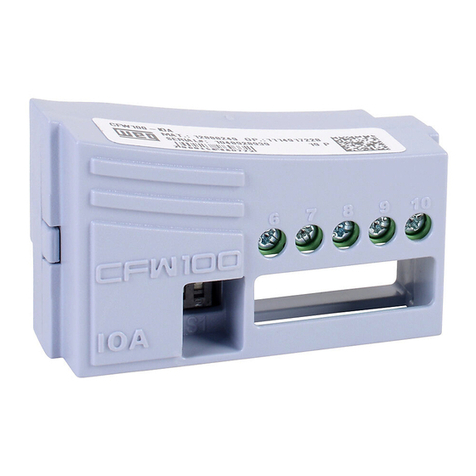EnOcean TCM 410J User manual

USER MANUAL
TCM 410J –Transceiver Gateway Module
© 2022 EnOcean | www.enocean.com TCM 410J User Manual | v2.3 | June 2022 | Page 1/ 46
TCM 410J –Transceiver Gateway Module
Patent protected:
WO98/36395, DE 100 25 561, DE 101 50 128,
WO 2004/051591, DE 103 01 678 A1, DE 10309334,
WO 04/109236, WO 05/096482, WO 02/095707,
US 6,747,573, US 7,019,241
Observe precautions! Electrostatic sensitive devices!

USER MANUAL
TCM 410J –Transceiver Module
© 2022 EnOcean | www.enocean.com TCM 410J User Manual | v2.3 | June 2022 | Page 2 / 46
REVISION HISTORY
The following major modifications and improvements have been made to the first version of
this document:
No
Major Changes
1.00
Initial version
1.10
Added certification information and PCB Design
1.2
Changed power support information
1.3
Updated Energy consumption. Added example circuits for reset and prog_en pins.
Extended PIN description. Added IOVDD and PINs circuits when using dee psleep.
2.0
Module revision update, added enhanced security mode,
MSL4 -> MSL 3 and type approval updated.
2.1
Corrected Smart Ack Mailbox count and added description for repeating after POR
2.2
2019: Update of MIC/ARIB regulation
2.3
2022-04-07: Additional MIC/ARIB approval for new antennas
Published by EnOcean GmbH, Kolpingring 18a, 82041 Oberhaching, Germany
www.enocean.com, info@enocean.com, phone +49 (89) 6734 6890
© EnOcean GmbH
All Rights Reserved
Important!
This information describes the type of component and shall not be considered as assured characteris-
tics. No responsibility is assumed for possible omissions or inaccuracies. Circuitry and specifications are
subject to change without notice. For the latest product specifications, refer to the EnOcean website:
http://www.enocean.com.
As far as patents or other rights of third parties are concerned, liability is only assumed for modules,
not for the described applications, processes and circuits.
EnOcean does not assume responsibility for use of modules described and limits its liability to the
replacement of modules determined to be defective due to workmanship. Devices or systems containing
RF components must meet the essential requirements of the local legal authorities.
The modules must not be used in any relation with equipment that supports, directly or indirectly,
human health or life or with applications that can result in danger for people, animals or real value.
Components of the modules are considered and should be disposed of as hazardous waste. Local gov-
ernment regulations are to be observed.
Packing: Please use the recycling operators known to you.

USER MANUAL
TCM 410J –Transceiver Module
© 2022 EnOcean | www.enocean.com TCM 410J User Manual | v2.3 | June 2022 | Page 3 / 46
TABLE OF CONTENT
1. Product Description ....................................................................................... 5
1.1 Basic functionality .........................................................................................5
1.2 Key features .................................................................................................5
1.3 Security processing ....................................................................................... 6
1.4 Technical data...............................................................................................6
1.5 Physical dimensions ....................................................................................... 7
1.6 Environmental conditions ...............................................................................7
1.7 Ordering information ..................................................................................... 7
2. Functional Description ....................................................................................8
2.1 Pinout .......................................................................................................... 8
2.2 Pin description and operational characteristics ..................................................9
2.2.1 GPIO supply voltage - IOVDD.................................................................... 10
2.2.2 Handling IOVDD and PINs in sleep mode .................................................... 11
2.3 Absolute maximum ratings (non-operating) .................................................... 12
2.4 Maximum ratings (operating)........................................................................ 12
2.5 Suggested RESET and PROG_EN circuitry ....................................................... 13
2.6 System environment.................................................................................... 13
2.7 Serial Interface ........................................................................................... 14
2.8 Built-in Repeater ......................................................................................... 15
2.8.1 Persistent Repeater settings .................................................................. 16
2.9 Smart Acknowledge ..................................................................................... 16
2.10 Remote Management .............................................................................. 16
3. Security Functionality .................................................................................. 17
3.1 Operational modes ...................................................................................... 18
3.2 Reception ................................................................................................... 19
3.2.1 Setup of security information in the inbound secure link table ....................... 20
3.2.2 Resynchronisation of Learned-in Secure Devices ......................................... 20
3.2.3 Processing of received messages with implicit RLC....................................... 21
3.2.4 Filtering ................................................................................................. 23
3.3 Transmission .............................................................................................. 23
3.3.1 Setup of security parameters in the outbound secure link table ..................... 23
3.3.2 Transmission of a teach-in telegram .......................................................... 23
3.3.3 Transmission of data messages ................................................................. 24
3.4 Storage for Rolling Codes and Keys ............................................................... 25
3.4.1 External EEPROM..................................................................................... 25
3.4.2 Voltage drops.......................................................................................... 26
3.5 Configurations ............................................................................................ 27
4. Application Information ................................................................................ 28
4.1 Transmission range ..................................................................................... 28
4.2 Antenna options .......................................................................................... 29
4.2.1 Overview................................................................................................ 29
4.2.2 Whip antenna ......................................................................................... 29
4.2.2.1 Recommendations for placement of the whip antenna ........................... 30
4.2.3 Helical antenna ....................................................................................... 31
4.2.4 Top loaded PCB spiral antenna .................................................................. 32
4.3 Power supply requirements........................................................................... 34
4.4 Layout recommendations ............................................................................. 34
4.4.1 Recommended foot pattern....................................................................... 35

USER MANUAL
TCM 410J –Transceiver Module
© 2022 EnOcean | www.enocean.com TCM 410J User Manual | v2.3 | June 2022 | Page 4 / 46
4.5 Soldering information .................................................................................. 38
4.6 Tape & Reel specification.............................................................................. 39
5. Japan Certification ....................................................................................... 40
5.1 Standard Certificate (206-000596) ................................................................ 40
5.1.1 Supported antennas based on the standard certificate ................................. 41
5.1.2 Required marking .................................................................................... 42
5.2 Additional Certificate (215-JUK004) ............................................................... 43
5.2.1 Supported antennas based on the additional certificate ................................ 44
5.2.2 Required marking .................................................................................... 45
6. References ................................................................................................. 46

USER MANUAL
TCM 410J –Transceiver Module
© 2022 EnOcean | www.enocean.com TCM 410J User Manual | v2.3 | June 2022 | Page 5 / 46
1. Product Description
1.1 Basic functionality
TCM 410J is a SMD mountable radio transmitter module enabling the realization of gateways
for EnOcean 928.350 MHz radio systems.
TCM 410J provides a bi-directional radio interface and a bi-directional serial interface. Radio
messages are sent transparently through the serial interface in both directions from and to
an externally connected host processor or host PC.
TCM 410J allows to encrypt and sign the outgoing radio communication and to decrypt and
authenticate the incoming radio communication.
TCM 410J accepts control commands from the host, for instance to configure the repeater
functionality or to manage Smart Ack functions. TCM 410J can act as postmaster for up to
15 bi-directional sensors using Smart Ack technology.
The figure below illustrates the outline of TCM 410J.
1.2 Key features
TCM 410J provide the following key features:
◼EnOcean radio transceiver gateway
◼Serial interface using ESP3 (EnOcean Serial Protocol V3)
◼Smart Ack controller functionality
◼Configurable repeater functionality (1 Level)

USER MANUAL
TCM 410J –Transceiver Module
© 2022 EnOcean | www.enocean.com TCM 410J User Manual | v2.3 | June 2022 | Page 6 / 46
1.3 Security processing
TCM 410J supports the following security processing features:
◼Decryption and authentication of received telegrams
◼Encryption and signing of transmitted telegrams
◼Processing of Rolling Codes and Security Keys for transmission and reception
◼Attack detection
◼Configurable security parameters (RLC Window, etc.)
◼I2C driver for communication with external EEPROM (required for security functionality)
1.4 Technical data
Features overview
Antenna
External whip or 50Ω antenna mountable
Frequency
928.350 MHz (FSK)
Radio Standard
Enocean Radio Protocol 2 (FSK)
Data rate/Modulation type
125 kbps FSK
Receiver Sensitivity (at 25°C)
typ. –95 dBm
Conducted Output Power
typ. 0dBm
Power Supply
2.6…5V
Serial Interface
UART according to EnOcean Serial Protocol 3
Current Consumption
Receive mode (incl. CPU current): 27 mA
Transmit mode (incl. CPU current): 22 mA
Dimensions of PCB
22x19x3.1 mm
Operating temperature
-25 to +85°C
Radio Regulations
ARIB STD-T108

USER MANUAL
TCM 410J –Transceiver Module
© 2022 EnOcean | www.enocean.com TCM 410J User Manual | v2.3 | June 2022 | Page 7 / 46
1.5 Physical dimensions
TCM 410J (pads on bottom side of PCB!)
1.6 Environmental conditions
Operating temperature -25 °C … +85 °C
Storage temperature -40 °C … +85 °C
Storage temperature in tape & reel package -20 °C … +50 °C
Humidity 0% … 93% r.H., non-condensing
1.7 Ordering information
Type
Ordering Code
Frequency
TCM 410J
S3063-K410
928.35 MHz
PCB Dimension 22 x 19 x 3.1 mm
Weight 1.9 g
Unless otherwise specified dimensions are in mm.
Tolerances:
PCB outline dimensions 0.2 mm
All other tolerances 0.1 mm

USER MANUAL
TCM 410J –Transceiver Module
© 2022 EnOcean | www.enocean.com TCM 410J User Manual | v2.3 | June 2022 | Page 8 / 46
2. Functional Description
2.1 Pinout
The figure below shows the pinout of the TCM 410J module.
TCM 410J
TOP VIEW
DVDD
RVDD
n.c.
IOVDD
SCSEDIO0
WXIDIO
WXODIO
ADIO0
ADIO1
ADIO2
ADIO3
ADIO4
ADIO5
ADIO6
ADIO7
PROG_EN
SCLKDIO1
WSDADIO2
RSDADIO3
GND
GND
GND
RF_50
RF_WHIP
n.c.
VDD
GND
GND
1
9
18
26
GND
RESET
GND
GND
n.c.
n.c.

USER MANUAL
TCM 410J –Transceiver Module
© 2022 EnOcean | www.enocean.com TCM 410J User Manual | v2.3 | June 2022 | Page 9 / 46
2.2 Pin description and operational characteristics
HW Symbol
Pin #
Function
Characteristics
GND
1, 5, 7,
17, 24,
26, 28, 31
Ground connection
Must be connected to GND; see 4.3
VDD
2
Supply voltage
2.6 V … 5 V
RVDD
8
RF supply voltage regulator
output
Leave open
DVDD
25
Digital supply voltage
regulator output
1.8 V
Output current: max. 5 mA
IOVDD
23
GPIO supply voltage
Must be connected to desired inter-
face supply voltage (see 2.4) See also
2.2.1.
RESET
27
Reset input
Programming I/F
Active high reset. External 10 kΩ pull-
down parallel to 10nF capacitor rec-
ommended. See 0.
PROG_EN
18
Digital input,
Programming I/F
HIGH (at start up): programming
mode active
LOW: operating mode
External 10 kΩ pull-down parallel to
10nF capacitor recommended. See 0.
ADIO0
9
Not used by standard FW.
Configured as Digital In with Pull Up
ADIO1
10
Not used by standard FW.
Configured as Digital In with Pull Up
ADIO2
11
Not used by standard FW.
Configured as Digital In with Pull Up
ADIO3
12
Not used by standard FW.
Configured as Digital In with Pull Up
ADIO4
13
Not used by standard FW.
Configured as Digital In with Pull Up
ADIO5
14
Not used by standard FW.
Configured as Digital In with Pull Up
ADIO6
15
UART input –RX
See 2.7
ADIO7
16
UART output - TX
Programming I/F
See 2.7
SCSEDIO0
19
Interface for external
EEPROM with I2C interface
Programming I/F
Digital I/O for I2C Data communica-
tion.
SCLKDIO1
20
Interface for external
EEPROM with I2C interface.
Programming I/F
Digital Output, Clock pin for I2C Com-
munication
WSDADIO2
21
Not used by standard FW.
Programming I/F
Configured as Digital In with Pull Up
RSDADIO3
22
Not used by standard FW.
Programming I/F
Configured as Digital In with Pull Up
WXIDIO
29
Not used by standard FW.
Configured as Digital In with Pull Up
WXODIO
30
Not used by standard FW.
Configured as Digital In with Pull Up
RF_WHIP
4
RF output
Output for whip antenna
RF_50
6
RF output
50 Ohm output for external antenna
n.c.
3, 32,33,
34
Not connected
Do not connect!

USER MANUAL
TCM 410J –Transceiver Module
© 2022 EnOcean | www.enocean.com TCM 410J User Manual | v2.3 | June 2022 | Page 10 / 46
2.2.1 GPIO supply voltage - IOVDD
For digital communication with other circuitry (peripherals) the digital I/O configured pins of
the mixed-signal sensor interface (ADIO0 to ADIO7) and the pins of the serial interface
(SCSEDIO0, SCLKDIO1, WSDADIO2, RSDADIO3) may be operated from supply voltages dif-
ferent from DVDD.
To do so, an input for supplying the interface voltage (IOVDD) is available which can be
connected either to DVDD (to use the same voltage as the supply voltage) or to an external
supply with a different voltage within the tolerated voltage range of IOVDD.
If DVDD=0 V (e.g. in any sleep mode or if VDD<VOFF) and IOVDD is supplied,
then there may be unpredictable and varying current from IOVDD caused by in-
ternal floating nodes. It must be assured that current flowing into IOVDD does not
exceed 10 mA while DVDD=0 V.
If DVDD=0 V and IOVDD is not supplied, then do not apply voltage to any of the
above-mentioned pins. Doing so may lead to unpredictable malfunction of the de-
vice.
For I/O pins configured as analogue pins the IOVDD voltage level is not relevant!
However it is important to connect IOVDD to a supply voltage as specified in 2.4.
IOVDD
ADIO0
ADIO1
ADIO2
ADIO3
ADIO4
ADIO5
ADIO6
ADIO7
SCSEDIO0
SCLKDIO1
WSDADIO2
RSDADIO3
If configured as digital I/O

USER MANUAL
TCM 410J –Transceiver Module
© 2022 EnOcean | www.enocean.com TCM 410J User Manual | v2.3 | June 2022 | Page 11 / 46
2.2.2 Handling IOVDD and PINs in sleep mode
TCM 410J is designed for line-powered applications communicating over a serial interface
(UART). For some applications it might be desirable to put TCM 410J into sleep mode to
conserve energy while the device is not used.
As discussed in chapter 2.2.1. above, it is not recommended to supply IOVDD or connect
voltage to IOs if DVDD = 0 V (e.g. in any sleep mode or if VDD<VOFF). If the module is put
into deep sleep mode (i.e. with the serial command CO_WR_SLEEP, see chapter 2.7), then
it is important to cut IOVDD supply and not apply voltage on the IO pins (e.g. the UART in-
terface).
The example below illustrates how to control IOVDD using DVDD as controlling signal.

USER MANUAL
TCM 410J –Transceiver Module
© 2022 EnOcean | www.enocean.com TCM 410J User Manual | v2.3 | June 2022 | Page 12 / 46
2.3 Absolute maximum ratings (non-operating)
Symbol
Parameter
Min
Max
Units
VDD
Supply voltage at VDD
-0.5
5.5
V
IOVDD
GPIO supply voltage
-0.5
3.6
V
GND
Ground connection
0
0
V
VINA
Voltage at every analog input pin
-0.5
2
V
VIND1
Voltage at RESET, and every digital input pin except
WXIDIO/WXODIO
-0.5
3.6
V
VIND2
Voltage at WXIDIO / WXODIO input pin
-0.5
2
V
2.4 Maximum ratings (operating)
Sym-
bol
Parameter
Min
Max
Units
VDD
Supply voltage at VDD
2.6
5
V
IOVDD
GPIO supply voltage (see also 2.2.1)
1.7
3.6
V
GND
Ground connection
0
0
V
VINA
Voltage at every analog input pin
0
2.0
V
VIND1
Voltage at RESET, and every digital input pin except
WXIDIO / WXODIO
0
3.6
V
VIND2
Voltage at WXIDIO / WXODIO input pin
0
2.0
V
VDDR
Max. ripple at VDD
50
mVpp

USER MANUAL
TCM 410J –Transceiver Module
© 2022 EnOcean | www.enocean.com TCM 410J User Manual | v2.3 | June 2022 | Page 13 / 46
2.5 Suggested RESET and PROG_EN circuitry
To ensure reliable operation, it is recommended to connect both the RESET and the
PROG_EN with a 10 kΩresistor in parallel with a 10 nF capacitor to ground. This avoids
spurious signal detection in very noisy environments and in situations where an external
programming header is provided.
The suggested circuit is shown below.
If the programming interfaces / reset line is not used, then the TO_PROGRAM_HEADER line
should be connected to GND.
2.6 System environment
The figure below shows the integration of TCM 410J into a typical system environment.

USER MANUAL
TCM 410J –Transceiver Module
© 2022 EnOcean | www.enocean.com TCM 410J User Manual | v2.3 | June 2022 | Page 14 / 46
2.7 Serial Interface
TCM 410J provides a bi-directional serial interface according to the EnOcean ESP3 specifica-
tion. For details regarding ESP3 please refer to the ESP3 specification. The data rate on the
serial interface is 56.8 kbit/s which is usually interoperable with systems running at
57.6 kbit/s.
Direction
Nominal serial data rate
Tolerance
TX (sent by module)
56888 bit/s (=57600 bit/s - 1.23%)
< 50 ppm
RX (received by module)
56888 bit/s
< 5%
The following ESP3 commands are supported:
◼Type 10 : Radio Packet
◼Type 2: Responses
◼Type 4: Event
oSA_CONFIRM_LEARN to confirm/discard learn in/out
oCO_READY to indicate wake up from deep sleep initiated by CO_WR_SLEEP
◼Type 4: Event related to security processing
CO_EVENT_SECUREDEVICES
◼Type 5: Common commands
oCO_WR_SLEEP to enter energy saving mode (deep sleep mode)
oCO_WR_RESET to reset the device
oCO_RD_VERSION to read SW/HW versions, chip ID etc.
oCO_WR_IDBASE to write ID range base number
oCO_RD_IDBASE to read ID range base number
oCO_WR_REPEATER to configure repeater functionality
oCO_RD_REPEATER to read repeater state
oCO_WR_FILTER_ADD to add filter to filter list (up to 10 filters are supported)
oCO_WR_FILTER_DEL to delete filter from filter list
oCO_WR_FILTER_DEL_ALL to delete all filter
oCO_WR_FILTER_ENABLE to enable/disable supplied filters
oCO_RD_FILTER to read supplied filters
oCO_WR_WAIT_MATURITY to wait maturity time before returning radio telegrams
◼Type 5: Common commands related to security processing
oCO_WR_LEARNMODE
oCO_RD_LEARNMODE
oCO_WR_SECUREDEVICE_ADD
oCO_WR_SECUREDEVICE_DEL
oCO_RD_SECUREDEVICE_COUNT
oCO_RD_SECUREDEVICE_BY_INDEX
oCO_RD_SECUREDEVICE_BY_ID
oCO_WR_SECUREDEVICE_SENDTEACHIN
oCO_WR_SECUREDEVICE_ADD_PSK
oCO_WR_TEMPORARY_RLC_WINDOW

USER MANUAL
TCM 410J –Transceiver Module
© 2022 EnOcean | www.enocean.com TCM 410J User Manual | v2.3 | June 2022 | Page 15 / 46
◼Type 6: Smart Acknowledge commands
oSA_WR_LEARNMODE to set/reset Smart Acknowledge learn mode
oSA_RD_LEARNMODE to get learn mode
oSA_WR_LEARNCONFIRM to add or delete a mailbox of a client
oSA_WR_RESET to send a reset command to a client
oSA_RD_LEARNEDCLIENTS to get learned mailboxes/clients
oSA_WR_POSTMASTER to activate/deactivate postmaster functionality
◼Type 7: Remote Management
oMessages up to 256 Bytes
2.8 Built-in Repeater
TCM 410J provides the option to activate a one-level repeater for EnOcean radio telegrams.
If a received telegram is valid and original (not yet repeated), then the telegram is re-
peated after a random delay. Configuration of the repeater is done via the ESP3 command
CO_WR_REPEATER.
Group
Offset
Size
Field
Value hex
Description
-
0
1
Sync. Byte
0x55
Header
1
2
Data Length
0x0003
3 bytes
3
1
Optional Length
0x00
0 byte
4
1
Packet Type
0x05
COMMON_COMMAND = 5
-
5
1
CRC8H
0xnn
Data
6
1
COMMAND Code
0x09
CO_WR_REPEATER = 09
7
1
REP_ENABLE
0x00…0x02
Repeater
0x00: OFF
0x01: Repeat all telegrams
0x02: Repeat telegrams according to filter list
8
1
REP_LEVEL
0x00…0x02
0x00: Repeater OFF
0x01: 1-level repeater
Optional
Data
9
1
STORAGE_TYPE
0x00 –0x01
No Optional Data: Volatile memory
0x00: Volatile memory
0x01: Non-volatile memory
-
10
1
CRC8D
0xnn
For detailed recommendations regarding the usage of repeaters please refer to our applica-
tion note EnOcean Wireless Systems - Installation Notes (PDF), 09/2010.
All configuration values set via ESP3 commands are held in RAM and will there-
fore be lost after RESET or after a deep sleep phase. Only Smart Ack mailboxes
are stored in FLASH and are available also after RESET or a deep sleep phase.
After sending a CO_WR_RESET command, the device will send a CO_READY
event indicating Wake-up Reason 06: ”A memory request from the CPU core
does not correspond to any valid memory location.” This is caused by the reset
which is issued after receiving CO_WR_RESET and is not a SW/HW malfunction.

USER MANUAL
TCM 410J –Transceiver Module
© 2022 EnOcean | www.enocean.com TCM 410J User Manual | v2.3 | June 2022 | Page 16 / 46
2.8.1 Persistent Repeater settings
TCM 410J supports storage of the Repeater settings either in volatile memory (lost upon
power cycle) or in non-volatile memory (maintained upon power cycle). The selection be-
tween these two options is made using the STORAGE_TYPE field of the CO_WR_REPEATER
command shown above.
2.9 Smart Acknowledge
TCM 410J provides a postmaster function with 10 mailboxes for sensors using Smart Ack
technology.
When teaching-in a device using Smart Acknowledge please take care to switch
off all TCM 4xyJ devices which are not continuously powered. Otherwise, these
TCM 4xyJ modules could be declared postmaster. As soon as the power supply is
switched off, a postmaster would be missing and Smart Acknowledge would not
work any longer!
2.10 Remote Management
TCM 410J provides a transparent radio channel also for remote management messages
with a message length of up to 256 bytes. This enables an external micro controller con-
nected to TCM 410J to handle remote management request from external devices or to
control other devices via remote management.

USER MANUAL
TCM 410J –Transceiver Module
© 2022 EnOcean | www.enocean.com TCM 410J User Manual | v2.3 | June 2022 | Page 17 / 46
3. Security Functionality
TCM 410J supports the following security features defined by the Security Level Format:
◼Encryption / Decryption modes
oNo data encryption
oVAES 128
oAES –CBC
◼Rolling Code (RLC) modes
oNo RLC
o2 byte RLC
o3 byte RLC
◼Authentication / Signing (CMAC) modes
oNo CMAC
o3 byte CMAC
o4 byte CMAC
◼Teach-in modes
oStandard teach-in (plaintext content)
oTeach-in content protected by PSK (content protected using pre-shared key)
TCM 410J supported the following security functions:
◼Decryption of received telegrams
◼Authentication (CMAC validation) of received telegrams
◼Encryption of transmitted telegrams
◼Signing (CMAC calculation) or transmitted telegrams
◼Handling of rolling codes (RLC) and security keys.
For details on the security functionality, please consult the EnOcean Alliance Security Speci-
fication using Reference [1].
Use of these secure features require the use of an external EEPROM as described in Chapter
3.4.

USER MANUAL
TCM 410J –Transceiver Module
© 2022 EnOcean | www.enocean.com TCM 410J User Manual | v2.3 | June 2022 | Page 18 / 46
3.1 Operational modes
TCM 410J provides the following functional modes for security processing:
◼Teach-in mode (inbound / outbound)
This mode is used to setup the parameters required for the security processing
◼Operational mode
This is the normal operation mode where secure telegrams are processed according to the
parameters that are setup in teach-in mode
For inbound (reception) and outbound (transmission) communication, TCM 410J is main-
taining a secure link table with individual entries containing the required parameters for se-
cure communication with one specific remote device. Each such entry contains information
on the security key, the rolling code (RLC) and the Security Level Format (SLF) to be used
for communication with the remote device.
The secure link table is managed using the following commands:
◼CO_WR_SECUREDEVICE_ADD
◼CO_WR_SECUREDEVICE_DEL
◼CO_RD_SECUREDEVICE_BY_INDEX
◼CO_RD_NUMSECUREDEVICES
◼CO_RD_SECUREDEVICE_BY_ID
The direction (inbound / outbound) must be specified.
The entries in the inbound table (used for the processing of received messages) can be ref-
erenced by one of the following two options:
◼Table index (entry number)
◼Device ID (EURID) of the device from which the message is received
The entries in the outbound table (used for the processing of transmitted messages) can be
referenced by one of the following options:
◼Table index (entry number)
◼Device ID (EURID) of the device to which the message is transmitted (for the case of
an addressed message)
◼Device ID (EURID) or Base ID of the TCM 410J module that is transmitting the mes-
sage for the case of a broadcast (non-addressed) transmission
Please select the correct ID based on your use case when adding devices to the outbound
table with the serial command CO_WR_SECUREDEVICE_ADD.
When using command CO_RD_SECUREDEVICE_BY_INDEX then please notice that the in-
bound and the outbound table use separate indexes which both start at 0.

USER MANUAL
TCM 410J –Transceiver Module
© 2022 EnOcean | www.enocean.com TCM 410J User Manual | v2.3 | June 2022 | Page 19 / 46
3.2 Reception
In Figure 1 the processing of received radio messages is shown. Also, the teach-in mode
and resynchronisation features are shown.
Figure 1 - Reception functionality
act Dolphin V4 Decoding
Is message from Taught
In device?
Is a security Teach In
Message?
Is Teach In Mode Active?
Is data message from Taught In
device?
Radio
Message
Received
Is Private key in message
matching with stored?
Update
stored
Rolling Code
Send Teach In
Message on
UART Interface
Remove
Message
Teach In new
Device
Send EVENT
to inform
wrong key
Send
Message
on UART
Decode Telegram
Wait for
antoehr
message
Is TeachIn protected
with PSK?
WasPSK
provided
before?
Fetch PSK.
and decode
TeachIn
Send EVENT to
infrom about
missing PSK
Remove
message
[NO]
[YES]
[NO]
[NO]
[YES]
[NO]
[YES]
[YES]
[NO]
[YES]
[NO] [YES] [NO]
[YES]

USER MANUAL
TCM 410J –Transceiver Module
© 2022 EnOcean | www.enocean.com TCM 410J User Manual | v2.3 | June 2022 | Page 20 / 46
3.2.1 Setup of security information in the inbound secure link table
For the processing of received messages, it is required to receive the security information
of the transmitting device in a teach-in message. TCM 410J must be put into LRN Mode us-
ing the ESP3 command CO_WR_LEARNMODE to accept the teach-in message. Otherwise (if
not in LRN mode), the teach-in message is ignored.
If a PSK (pre-shared key) is used to protect the content of the teach-in message, then the
PSK must be setup using the ESP3 command CO_WR_SECUREDEVICE_ADD_PSK before the
teach-in message is received.
After a successful teach-in process the whole teach-in message is provided to the host as
one serial message of Packet Type 10.
Once the security information of a transmitting device has been setup, TCM 410J can auto-
matically decode secure messages from this device.
Other received telegrams (for which no security parameters have been setup) will be for-
warded without processing to the host via the ESP3 interface as serial message of Packet
Type 10.
3.2.2 Resynchronisation of Learned-in Secure Devices
During normal operating mode (not teach-in mode) teach-in requests from unknown de-
vices are ignored.
If a learned-in device sends a teach-in request and the security key is correct, then the RLC
code information is updated. This is addressing the case where the receiver and sender’s
RLC become desynchronized.
If a learned-in device sends a teach-in request and the security key is not correct, then
TCM 410J will inform the host about a potential security issue using the ESP3 event
CO_EVENT_SECUREDEVICES
Table of contents
Other EnOcean Control Unit manuals
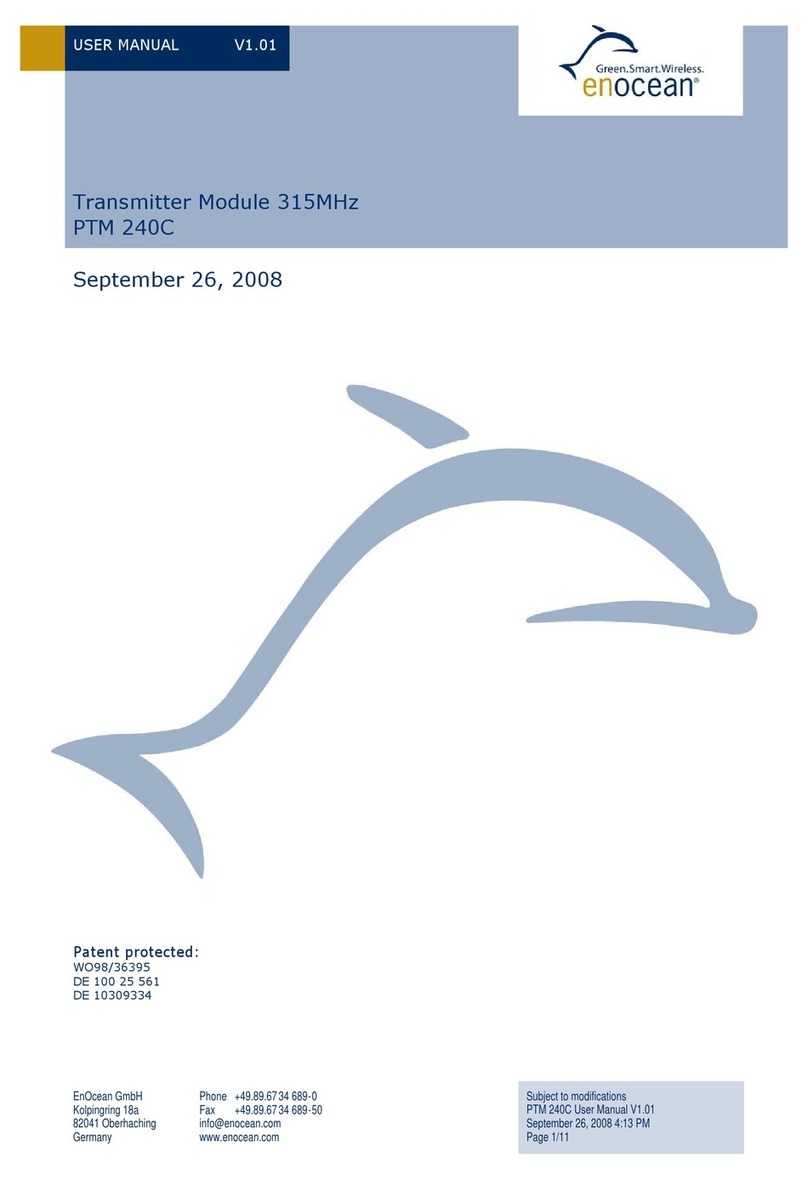
EnOcean
EnOcean PTM 240C User manual

EnOcean
EnOcean STM110C User manual
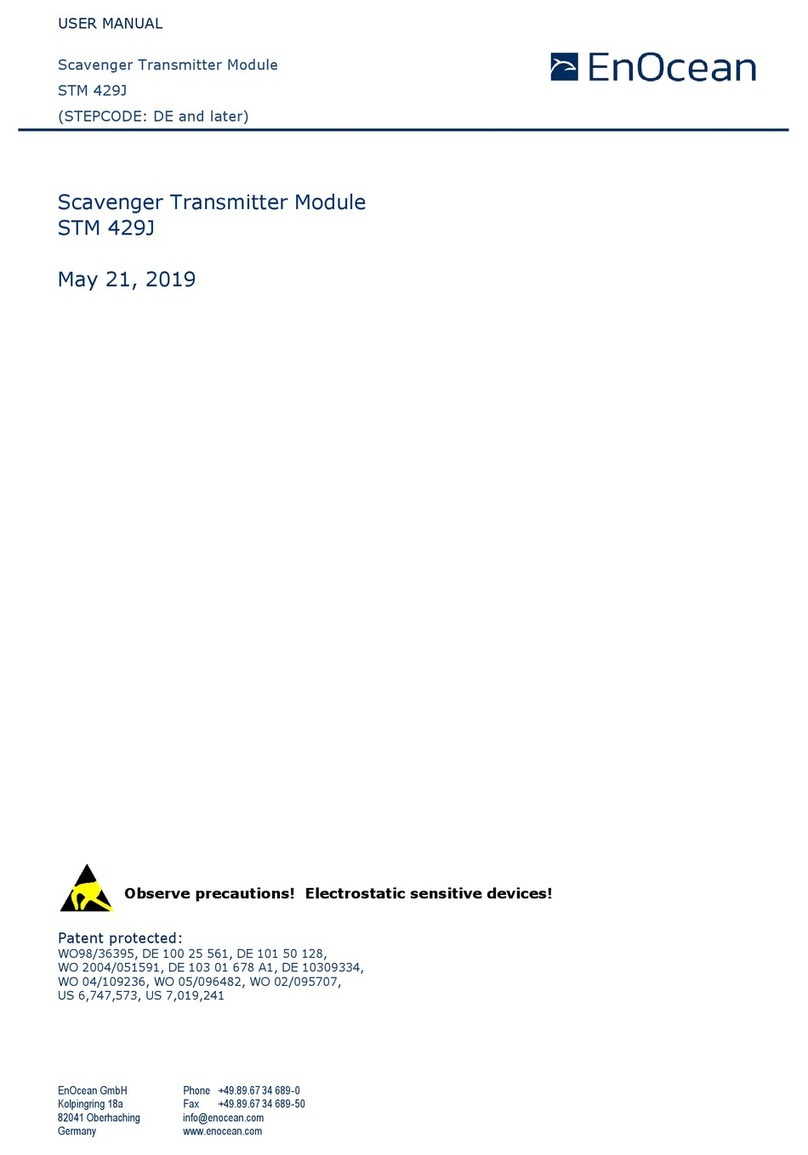
EnOcean
EnOcean Scavenger STM 429J User manual
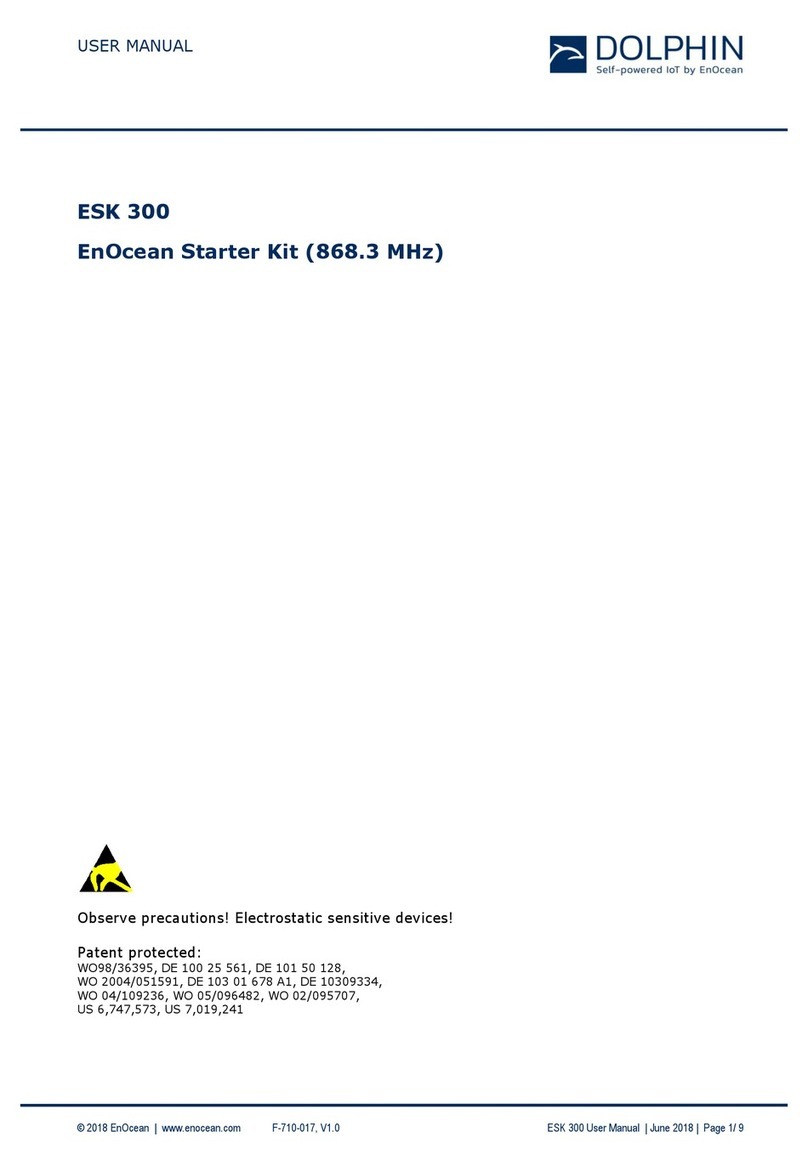
EnOcean
EnOcean ESK 300 User manual
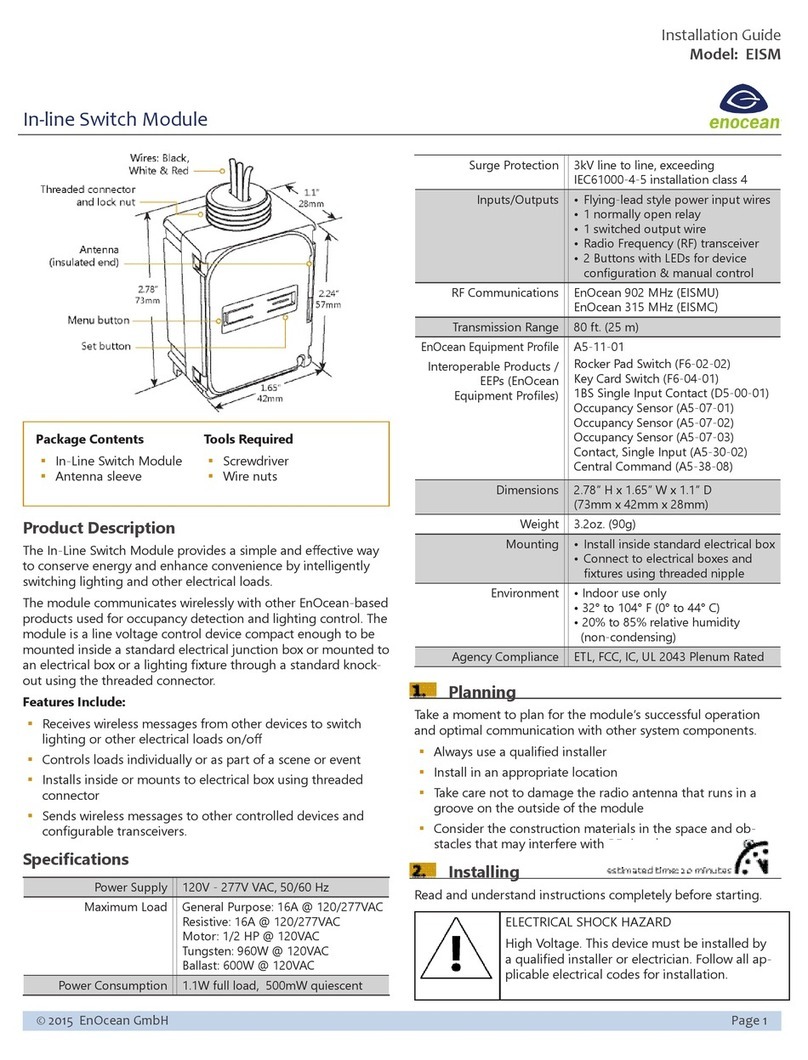
EnOcean
EnOcean EISM User manual
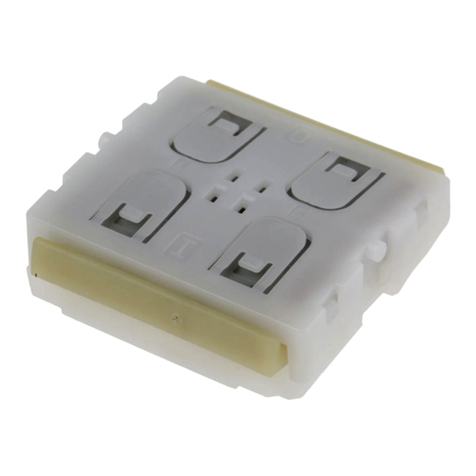
EnOcean
EnOcean PTM 210 User manual

EnOcean
EnOcean TCM 300 User manual
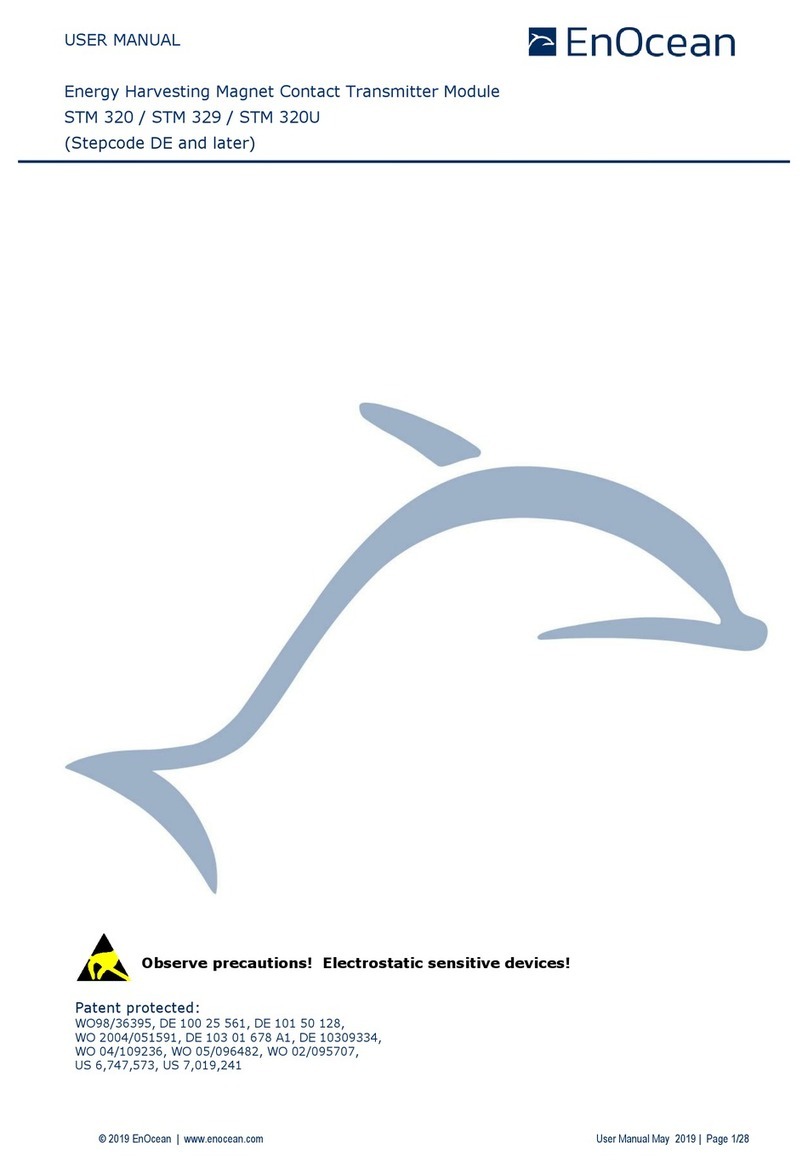
EnOcean
EnOcean STM 329 User manual

EnOcean
EnOcean TCM 320U User manual
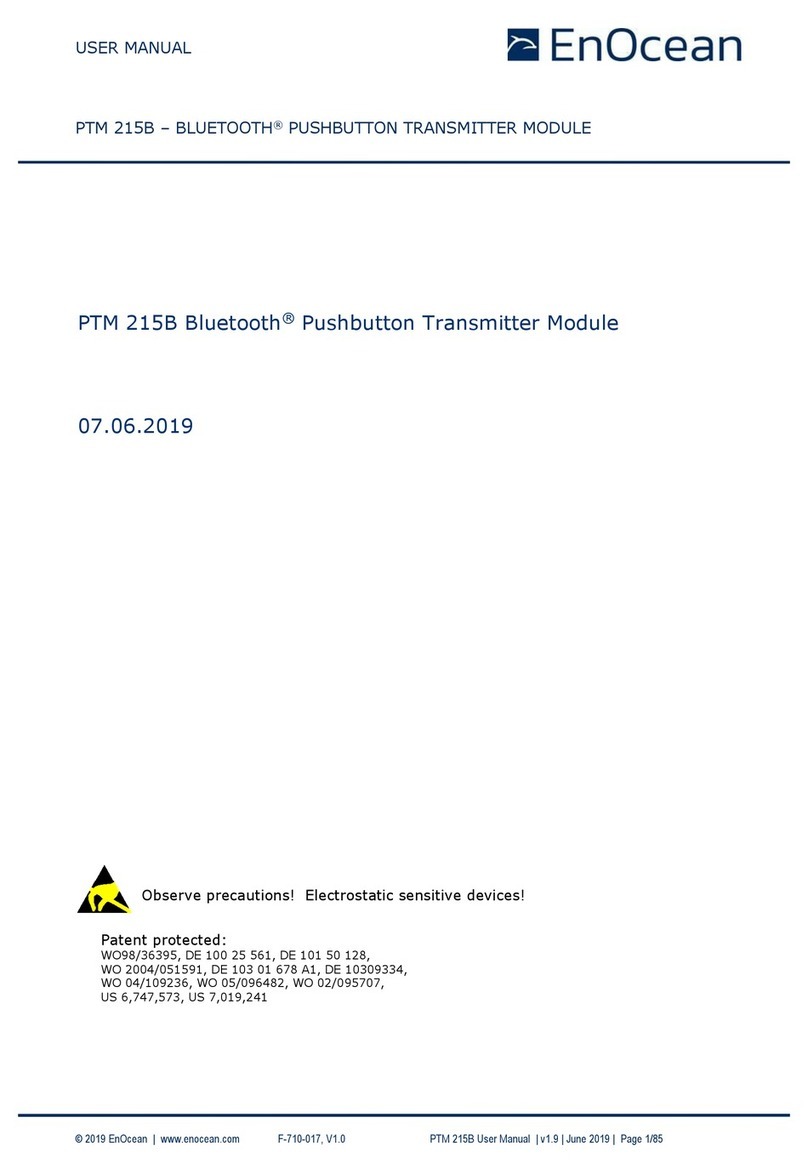
EnOcean
EnOcean PTM 215B User manual
Popular Control Unit manuals by other brands
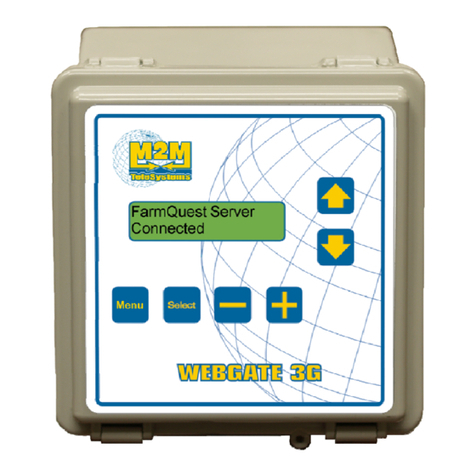
M2M
M2M WebGate 3G installation guide
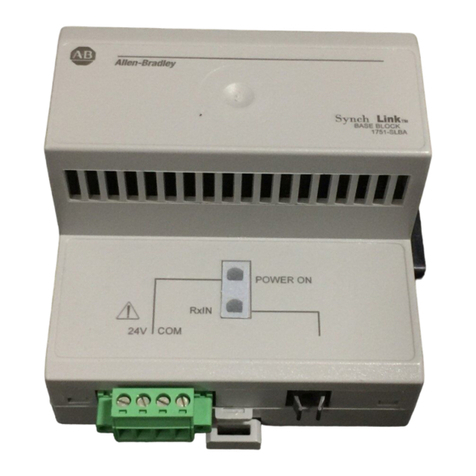
Rockwell Automation
Rockwell Automation Allen-Bradley SynchLink 1751-SLBA installation instructions
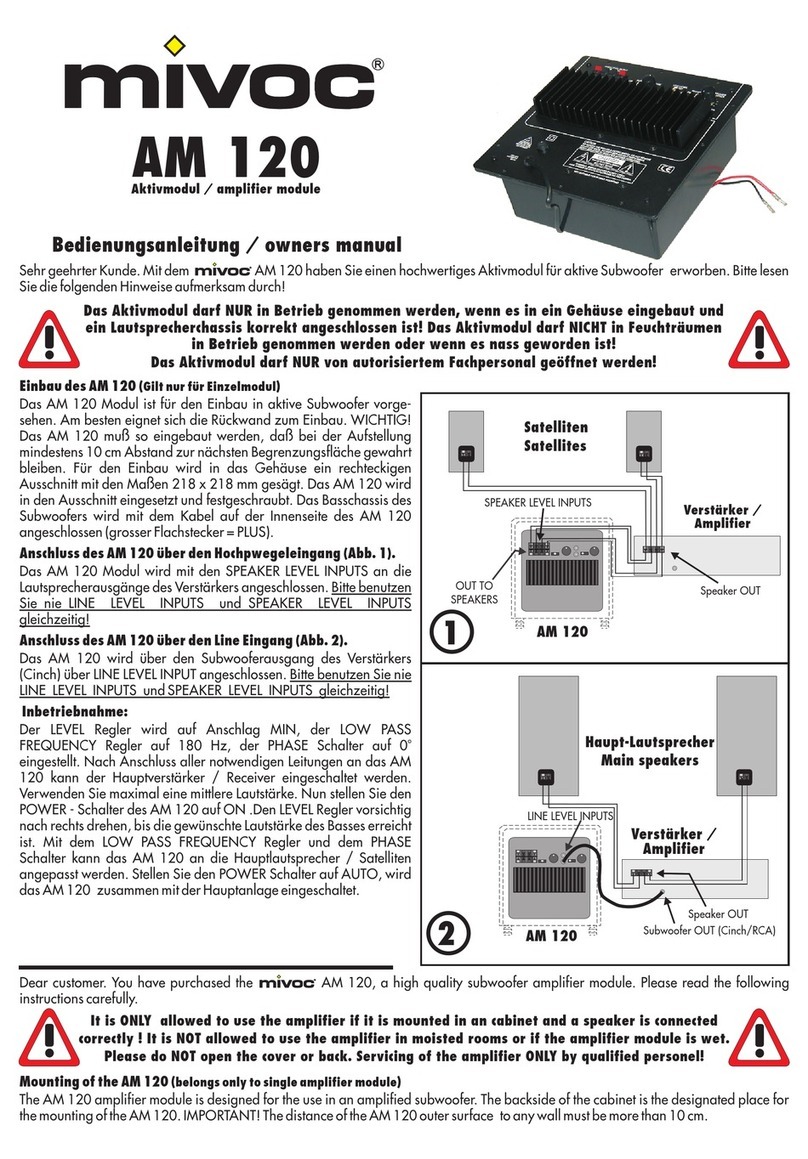
mivoc
mivoc AM 120 owner's manual
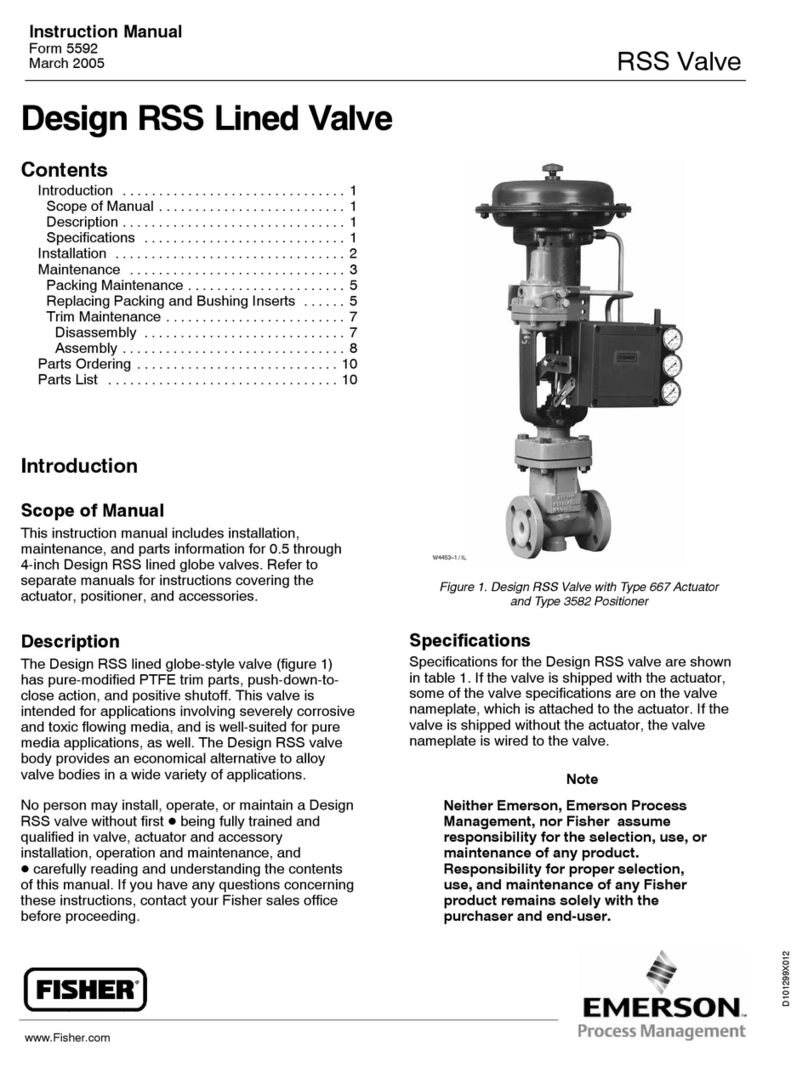
Emerson
Emerson FISHER RSS Series instruction manual
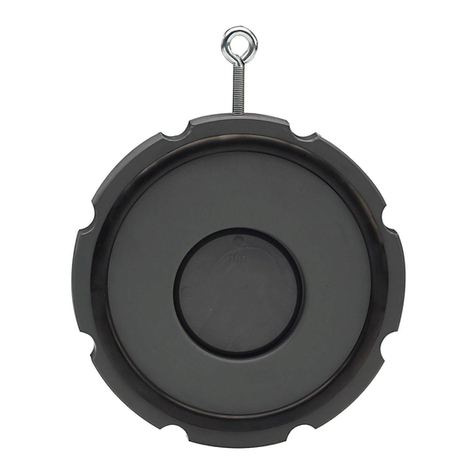
GF
GF 369 operating instructions
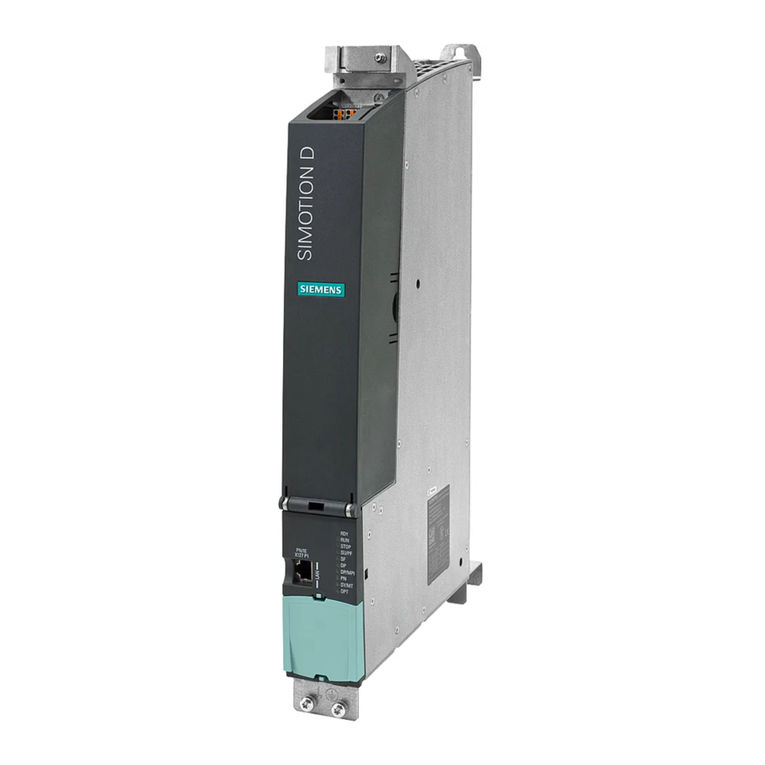
Siemens
Siemens SIMOTION D4 5-2 Series Commissioning and hardware installation manual
